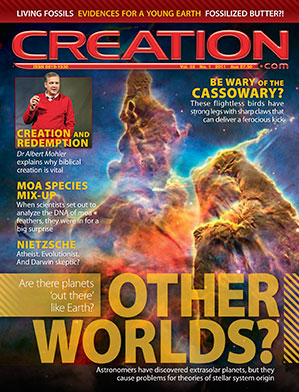Mutant (non-ninja) turtle?

Seeing this little turtle swimming around in a tank in Hong Kong1 with its two fully-formed heads (sometimes looking in opposite directions, sometimes at each other, each obviously controlled by a different brain) was an astonishing sight.
Seeing it could make one think, “Wow, what a strange mutant…” But is it? Not in the way most people understand the word. ‘Mutant’ means a defective creature resulting from a mutation. A mutation is an accidental change in the genetic code or DNA, which is thus inherited—passed on, generation after generation.
However, two-headed creatures like this turtle are not the result of mutations, but rather are another type of defect which can occur in a fallen world (Genesis 3). The accident does not occur in the code which programs the development of the embryo, but in the process of forming the embryo. In such cases, what happens is that the embryo splits into two, which normally forms twins—but the twins have failed to separate completely.
This two-headed condition is rare, but when it does occur, it is most often in turtles or snakes. (Tragically, it has occurred in humans, though fortunately it is extremely rare.) Each head has its own brain, and yet (in ways that vary from case to case) they share control of the same body and limbs. Such animals often move in confused patterns, reflecting an apparent disagreement between the two ‘controlling entities’.
The one thing such an animal does not do is give any comfort or support to the idea of evolution. The ‘extra head’ may look like an ‘extra’ piece of information. But an informed evolutionist would not point to it as an example of how random changes can add new programs (the missing ingredient in evolutionary speculations of how microbes allegedly turned into microbiologists). This is because they know that it is the same information, split into two, and defectively expressed. Looking at such a creature should help us to understand the seriousness of the Genesis curse on creation, resulting from our first ancestor’s rebellion against his Maker—and hence the seriousness of sin, and the glory of salvation (John 3:16).
Re-posted on homepage: 30 March 2022
References and notes
- This turtle, along with several others like it and even a ‘double fish’ was on live display in one of the outdoor sections at the Noah’s Ark Park exhibition in that city (see article p. 28 inside). Thanks to The Media Evangelism Ltd for permission to take photos. Return to text.



Readers’ comments
Comments are automatically closed 14 days after publication.